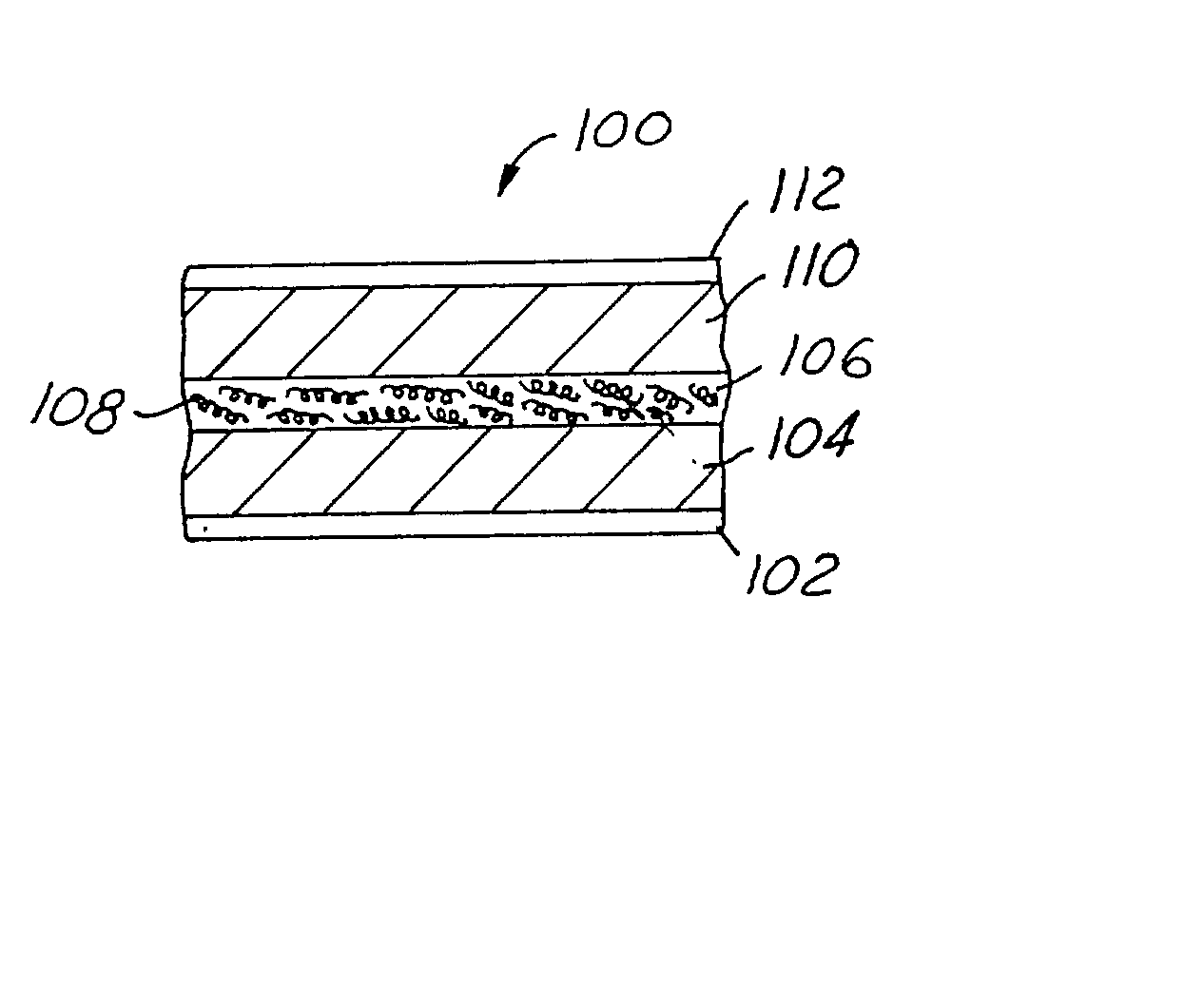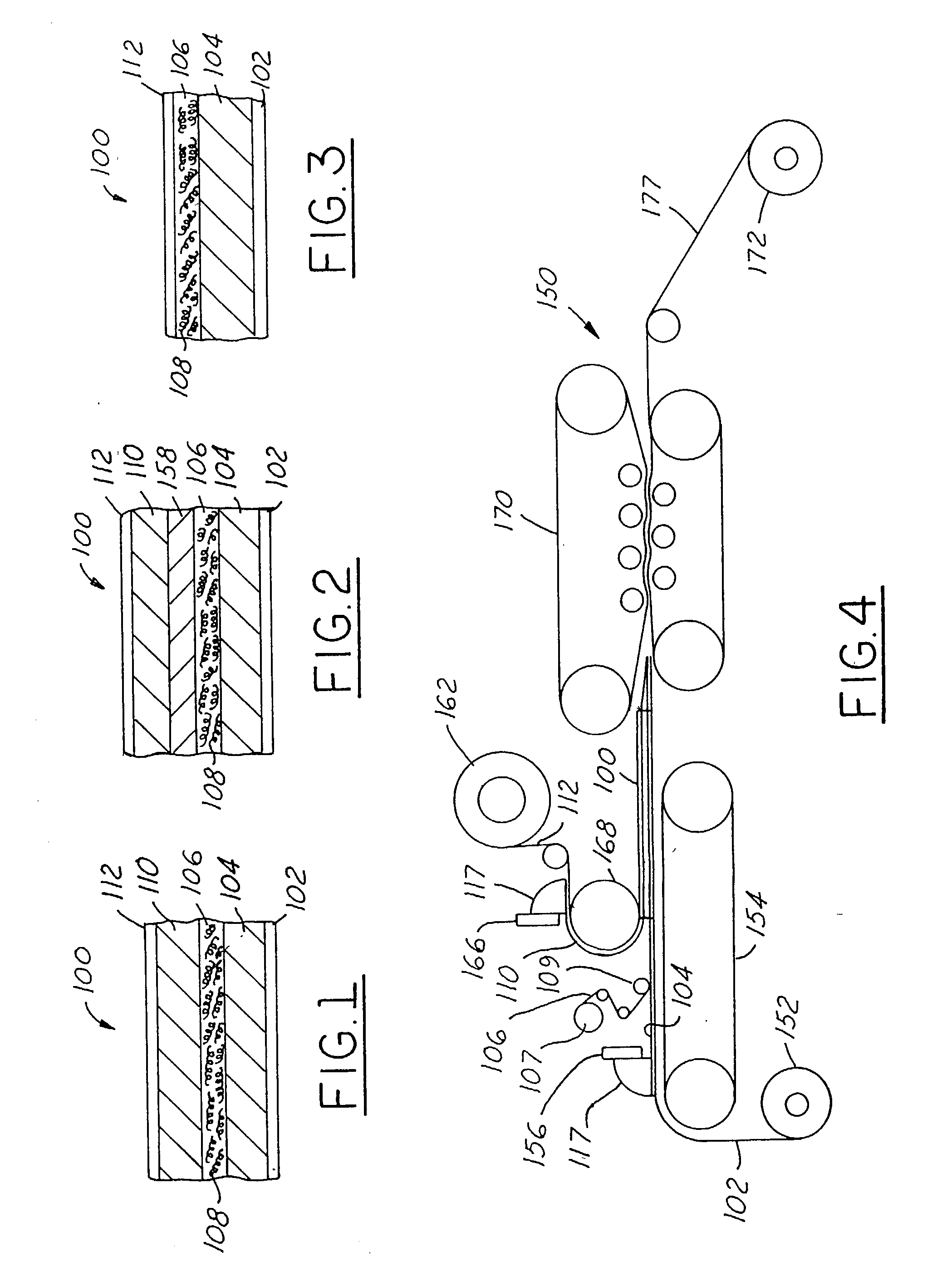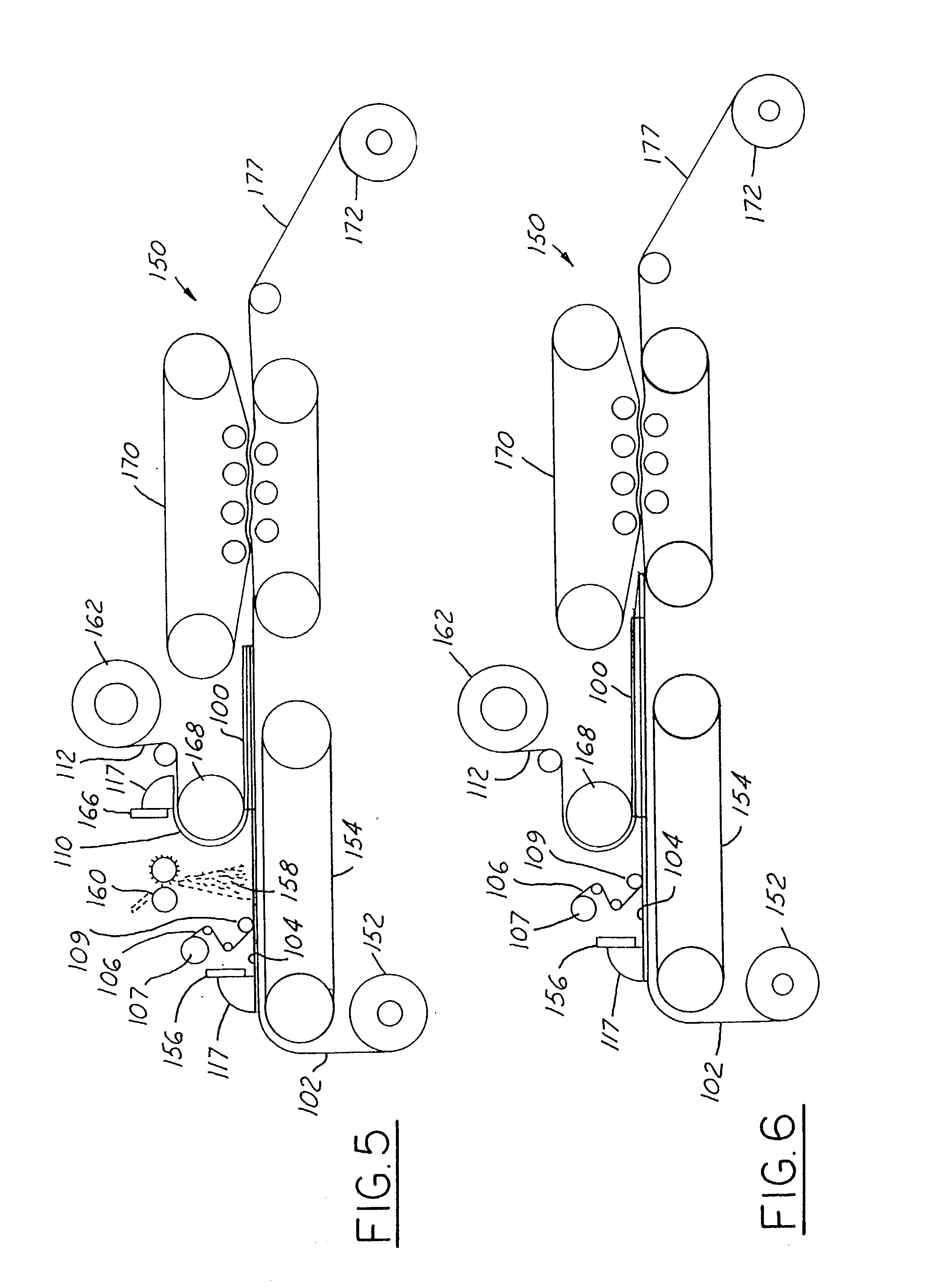Sheet molding compound having improved characteristics
a sheet molding compound and characteristic technology, applied in the field of sheet molding compound having improved characteristics, can solve the problems of sheet molding compound sometimes not flowing well, surface imperfections such as surface pores, and may not form a class a type surface part when molded, so as to improve surface finish, improve surface finish, and low density
- Summary
- Abstract
- Description
- Claims
- Application Information
AI Technical Summary
Benefits of technology
Problems solved by technology
Method used
Image
Examples
Embodiment Construction
[0042] FIGS. 1-3 show three preferred embodiments for a sheet molding compound sheet 100 used to make a sheet molding compound part having superior surface characteristics.
[0043] Referring now to FIG. 1, a sheet molding compound sheet 100 is shown as having a first carrier film layer 102, a first paste layer 104, a mat, or veil 106, having elongation along the length and with of the veil, preferably achieved by using a plurality of non-continuous irregularly shaped glass fibers 108 in the veil, a second paste layer 110, and a second carrier film layer 112. Although fibers 108 are illustrated as being irregularly shaped, as further described below, such fibers may alternatively comprise long chopped or irregularly continuous fibers. "Fibers" as used herein may comprise individual filaments, or bundles of filaments. "Elongation" as used herein comprises the veil being able to stretch along the length and / or width of the veil without substantial separation of the fibers to form discont...
PUM
| Property | Measurement | Unit |
|---|---|---|
| length | aaaaa | aaaaa |
| length | aaaaa | aaaaa |
| thickness | aaaaa | aaaaa |
Abstract
Description
Claims
Application Information
 Login to View More
Login to View More - R&D
- Intellectual Property
- Life Sciences
- Materials
- Tech Scout
- Unparalleled Data Quality
- Higher Quality Content
- 60% Fewer Hallucinations
Browse by: Latest US Patents, China's latest patents, Technical Efficacy Thesaurus, Application Domain, Technology Topic, Popular Technical Reports.
© 2025 PatSnap. All rights reserved.Legal|Privacy policy|Modern Slavery Act Transparency Statement|Sitemap|About US| Contact US: help@patsnap.com



